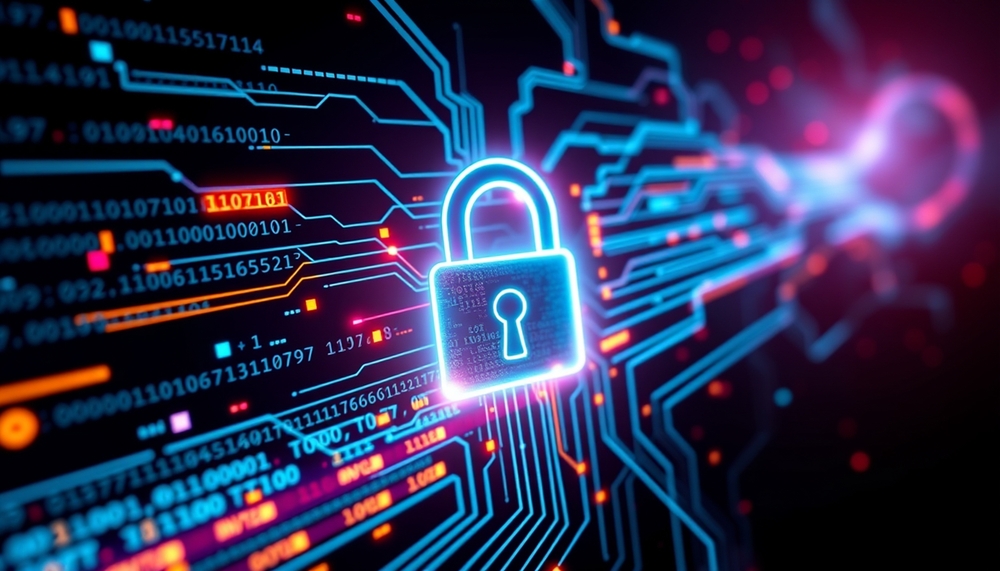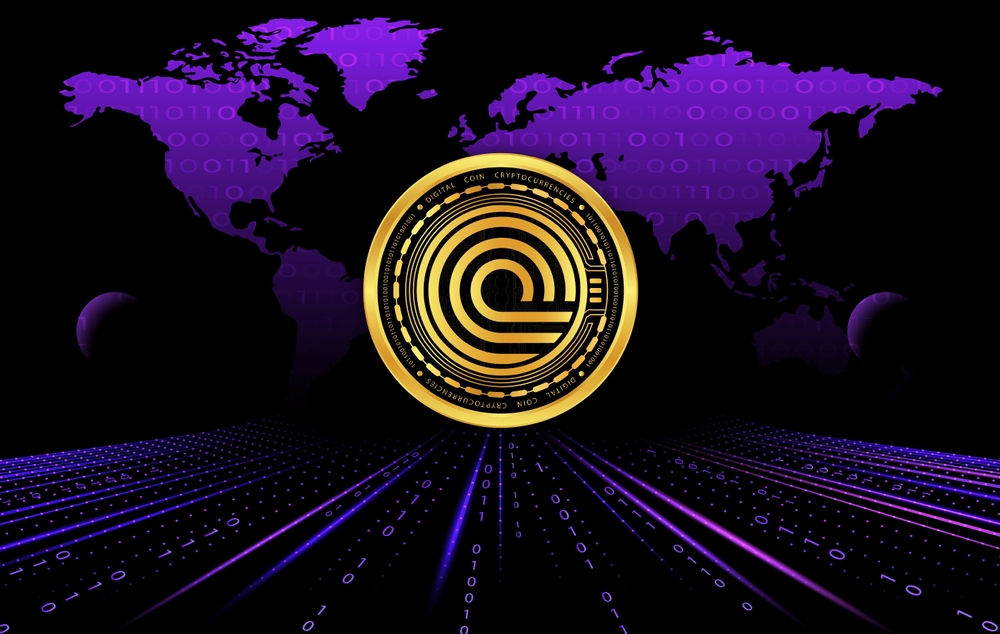Table of Contents
ToggleIntroduction
Cryptocurrency has transformed how we store and transfer value, but this digital gold rush comes with serious security concerns. As crypto assets gain popularity, they’ve become prime targets for hackers and scammers looking to exploit vulnerabilities. Protecting your cryptocurrency requires specialized cybersecurity practices including hardware wallets, strong authentication, and awareness of common threats like phishing attacks that target digital assets.

The blockchain technology behind cryptocurrencies offers innovative security features through encryption and decentralization, but these alone aren’t enough to keep your investments safe. Many security breaches occur not because of flaws in the blockchain itself, but through compromised exchanges, stolen private keys, or social engineering tactics that trick users into revealing sensitive information.
Understanding the unique intersection of cybersecurity and cryptocurrency is essential for anyone involved in this space. The stakes are particularly high since cryptocurrency transactions are typically irreversible, meaning once funds are stolen, they’re almost impossible to recover, unlike traditional banking where fraud protections exist.
Key Takeaways
- Effective crypto cybersecurity requires using hardware wallets, being vigilant about phishing attacks, and dealing only with reputable exchanges.
- Blockchain technology provides strong baseline security through encryption, but users must take additional steps to protect their private keys and digital wallets.
- Cryptocurrency security risks are heightened by the irreversible nature of transactions and limited regulatory protections compared to traditional banking.
Fundamentals of Cybersecurity

Cybersecurity forms the backbone of our digital infrastructure, protecting valuable data and systems from unauthorized access. Understanding core security concepts helps organizations and individuals defend against evolving threats.
Defining Cybersecurity
Cybersecurity is the practice of protecting digital assets, networks, systems, and data from malicious attacks or unauthorized access. It encompasses a range of technologies, processes, and practices designed to safeguard information.
The primary goal of cybersecurity is to maintain the confidentiality, integrity, and availability of information – often referred to as the CIA triad. These three principles form the foundation of any robust security program.
Cybersecurity professionals work to identify vulnerabilities in systems and networks before malicious actors can exploit them. They implement protective measures including firewalls, encryption, and access controls.
Modern cybersecurity extends beyond technical solutions to include user education, incident response planning, and security governance. As digital environments grow more complex, defending networks from intrusion requires a comprehensive approach.
Principles of Information Security
Information security relies on several key principles that guide protection strategies. The CIA triad mentioned earlier serves as the cornerstone:
- Confidentiality: Ensuring information is accessible only to authorized parties
- Integrity: Maintaining the accuracy and completeness of data
- Availability: Guaranteeing authorized users have reliable access to information
Beyond these principles, effective security implements defense in depth – using multiple layers of protection rather than relying on a single defense mechanism.
Risk management plays a critical role in information security. Organizations must identify valuable assets, assess potential threats, and implement appropriate controls based on risk tolerance. This process involves regular security assessments and updates.
Authentication and authorization systems control who can access specific resources. Multi-factor authentication has become increasingly important, requiring users to verify their identity through multiple methods.
Cryptography serves as a fundamental tool for securing information, enabling secure communications even across untrusted networks.
Understanding Cryptography

Cryptography forms the backbone of digital security by transforming readable data into encoded formats that protect sensitive information. Modern cryptographic systems employ various techniques to ensure confidentiality, integrity, authentication, and non-repudiation of data.
Symmetric and Asymmetric Encryption
Symmetric encryption uses a single key for both encryption and decryption processes. This approach is fast and efficient for large data transfers. Common symmetric encryption algorithms include AES (Advanced Encryption Standard), DES (Data Encryption Standard), and 3DES.
Asymmetric encryption, also called public-key cryptography, uses two mathematically linked keys – public and private. The public key encrypts data while only the matching private key can decrypt it. This solves the key distribution problem that plagues symmetric systems.
Popular asymmetric algorithms include:
- RSA (Rivest-Shamir-Adleman)
- ECC (Elliptic Curve Cryptography)
- Diffie-Hellman
While symmetric encryption is faster, asymmetric encryption provides better security for key exchange and digital signatures. Many systems use both types together to leverage their respective strengths.
Hash Functions and Digital Signatures
Hash functions convert data of any size into fixed-length strings called hash values or digests. Unlike encryption, hashing is a one-way function – the original data cannot be retrieved from the hash. Common hash algorithms include SHA-256, MD5, and BLAKE2.
Key properties of secure hash functions:
- Deterministic – same input always yields same output
- Quick computation – efficient for any input size
- Pre-image resistance – cannot derive input from output
- Collision resistance – difficult to find two inputs with same output
Digital signatures combine hash functions with asymmetric encryption to provide authentication and non-repudiation. The sender creates a hash of the message, encrypts it with their private key, and attaches it to the message. Recipients verify authenticity by decrypting the signature with the sender’s public key.
Public Key Infrastructure (PKI)
PKI establishes a framework for creating, distributing, and managing cryptographic keys securely. At its core, PKI uses digital certificates issued by trusted Certificate Authorities (CAs) to verify identities in online communications.
Components of a typical PKI system include:
- Certificate Authorities that issue and verify digital certificates
- Registration Authorities that verify user identities
- Certificate Databases storing valid and revoked certificates
- Certificate Revocation Lists (CRLs)
Digital certificates contain the entity’s public key, identity information, and the CA’s signature. PKI systems ensure that when communicating with a website or service, you’re connecting to the legitimate entity rather than an impostor.
PKI enables secure communication across untrusted networks like the internet by establishing trust relationships through trusted third parties. This infrastructure supports applications including secure web browsing (HTTPS), secure email, and digital signatures.
Cybersecurity Threats and Vulnerabilities

The cryptocurrency landscape faces numerous security challenges that put digital assets at risk. These threats range from sophisticated technical attacks to social manipulation tactics, all aimed at exploiting weaknesses in systems and human behavior.
Types of Cyber Attacks
Malware remains one of the most prevalent threats to crypto users. Malicious software can secretly infiltrate devices to steal private keys or redirect transactions to attacker-controlled wallets.
Phishing attacks target crypto users through deceptive emails, websites, or messages that impersonate legitimate services. These attacks trick users into revealing their credentials or sending funds to fraudulent addresses.
Insider threats pose significant risks as individuals with access to sensitive information can exploit their positions to steal digital assets or compromise security systems.
Social engineering tactics manipulate users into breaking security protocols. Attackers may pose as customer support representatives or create urgency to bypass normal verification procedures.
Denial of Service (DoS) attacks overwhelm crypto exchanges or blockchain networks, preventing legitimate transactions and potentially creating opportunities for other exploits during the disruption.
Common Security Vulnerabilities
Smart contract flaws represent a major vulnerability unique to blockchain systems. Coding errors or logical oversights in these automated contracts can lead to substantial financial losses when exploited.
Exchange vulnerabilities continue to be attractive targets for hackers. Centralized exchanges that hold large amounts of cryptocurrency present a single point of failure if their security measures are compromised.
Weak private key management remains a fundamental vulnerability. Users who store keys insecurely or use predictable recovery phrases risk losing their entire holdings to attackers who gain access to these credentials.
API security weaknesses in crypto applications can allow unauthorized access to sensitive functions. Poorly secured APIs might enable attackers to bypass authentication or execute unauthorized transactions.
Emerging threats involving artificial intelligence and machine learning are becoming more sophisticated, allowing attackers to develop more targeted and effective methods to breach crypto security systems.
Cybersecurity Best Practices

Protecting digital assets requires implementing robust security measures across multiple layers of technology infrastructure. These practices help prevent unauthorized access and data breaches while maintaining system integrity.
Secure Coding Standards
Secure coding forms the foundation of cybersecurity defense. Developers should implement input validation to prevent injection attacks by checking all user inputs before processing them. This simple step blocks many common attack vectors.
Regular code reviews and security testing identify vulnerabilities before deployment. Automated scanning tools can detect common coding flaws, while manual reviews catch logic errors that automated tools might miss.
Following the principle of least privilege limits potential damage from breaches. Code should only request the minimum permissions needed to function properly. This prevents compromised applications from accessing sensitive system resources.
Encryption of sensitive data both in transit and at rest is essential. Developers should use strong, industry-standard encryption algorithms rather than creating custom solutions that may contain weaknesses.
Network Security Measures
Implementing strong firewalls and intrusion detection systems creates critical defensive barriers. These systems monitor network traffic patterns and block suspicious activities before they penetrate deeper into systems.
Network segmentation divides systems into separate zones with controlled access between them. This approach contains breaches by preventing lateral movement across the network when one segment is compromised.
Regular security updates and patches close known vulnerabilities. Organizations should establish automated patching processes to ensure systems receive updates promptly after release.
Multi-factor authentication adds an essential security layer beyond passwords. By requiring something the user knows (password) plus something they have (device) or are (biometric), unauthorized access becomes significantly more difficult even if credentials are compromised.
Endpoint Security Strategies
Robust endpoint protection software defends individual devices against malware and other threats. Modern solutions use behavioral analysis to detect unknown threats rather than relying solely on signature-based detection.
Device encryption protects data if hardware is lost or stolen. Full-disk encryption ensures that information remains inaccessible without proper authentication credentials.
Strong password policies prevent unauthorized access to endpoints. Requirements should include minimum length, complexity, and regular rotation schedules. Password managers help users maintain unique, complex passwords for each service.
Regular security awareness training educates users about current threats. Employees need to recognize phishing attempts, suspicious attachments, and social engineering tactics that might compromise their devices.
Application whitelisting restricts execution to approved programs only. This approach prevents malicious software from running even if it somehow bypasses other security measures.
The Role of Cryptocurrency in Cybersecurity

Cryptocurrencies have created new challenges and opportunities in the cybersecurity landscape. Digital currencies rely on cryptographic techniques for security but have also become tools used in cyber attacks.
Ransomware and Digital Payments
Ransomware attacks increasingly demand payment in cryptocurrency due to its perceived anonymity and difficulty in tracing transactions. According to senate committee findings, cryptocurrencies have enabled ransomware attacksbecause of their decentralized and distributed nature.
Attackers typically demand Bitcoin or Monero, with the latter offering enhanced privacy features. These digital payments allow criminals to receive funds without revealing their identities or locations.
Organizations face difficult decisions when attacked: pay the ransom with no guarantee of data recovery, or refuse and potentially lose critical information. Law enforcement agencies generally discourage ransom payments as they fund criminal operations.
Some businesses now maintain cryptocurrency reserves specifically to address potential ransom demands, treating this as part of their cyber incident response planning.
Cryptojacking and Malware
Cryptojacking involves unauthorized use of computing resources to mine cryptocurrency. Attackers install malware that runs in the background, consuming electricity and processing power without the victim’s knowledge.
These attacks are often difficult to detect as they don’t encrypt files or demand payment. Instead, they silently generate cryptocurrency for the attackers while slowing down victim systems.
Common signs of cryptojacking include:
- Unexplained high CPU usage
- System overheating
- Decreased performance
- Increased electricity costs
Cybersecurity for crypto becomes particularly important as cryptojacking malware continues to evolve. Some variants can spread across networks, targeting enterprise systems with significant computing resources.
Browser-based cryptojacking can occur through compromised websites, affecting users only during visits without requiring malware installation. Organizations should implement monitoring tools to detect unusual system behavior.
Regulatory Compliance and Standards

Compliance frameworks provide essential guidelines for organizations to protect data and systems in both cybersecurity and cryptocurrency operations. These standards establish minimum security requirements and best practices that help manage digital risks while maintaining legal obligations.
GDPR and Data Protection
The General Data Protection Regulation (GDPR) significantly impacts how crypto platforms handle user data in Europe. Implemented in 2018, it requires organizations to implement strong data protection measures and report breaches within 72 hours.
For cryptocurrency exchanges and wallets, GDPR compliance means:
- Obtaining explicit consent before collecting personal data
- Implementing the “right to be forgotten” mechanisms
- Maintaining detailed records of data processing activities
- Conducting Data Protection Impact Assessments for high-risk operations
Crypto projects face unique challenges with GDPR due to blockchain’s immutable nature. The permanent storage of transaction data on public ledgers can conflict with users’ right to data erasure, requiring innovative technical solutions.
Companies operating in both crypto and traditional finance must carefully balance privacy requirements with anti-money laundering (AML) obligations that demand certain levels of transparency.
ISO/IEC 27000 Series
The ISO/IEC 27000 series provides comprehensive security management standards that apply to both traditional and crypto businesses. ISO 27001 forms the foundation, outlining requirements for establishing, implementing, and continuously improving information security management systems (ISMS).
Key benefits for crypto organizations implementing ISO standards include:
- Risk assessment framework for identifying threats to digital assets
- Systematic approach to managing sensitive customer and operational information
- International recognition that builds client and investor trust
The standards address critical areas like asset management, access control, and cryptographic controls—particularly relevant for exchanges and custodial services storing private keys. Organizations seeking certification must undergo rigorous audits by accredited third parties.
Many institutional investors now require ISO 27001 certification before engaging with crypto service providers, making it a competitive advantage in the market.
NIST Cybersecurity Framework
The NIST Cybersecurity Framework offers flexible guidelines developed by the U.S. National Institute of Standards and Technology. This voluntary framework is increasingly adopted by crypto companies to structure their security programs through five core functions:
Identify → Protect → Detect → Respond → Recover
For cryptocurrency organizations, NIST provides valuable guidance on:
- Securing digital wallets and exchange infrastructure
- Implementing strong key management protocols
- Creating incident response plans for potential breaches
Unlike some regulations, NIST allows organizations to tailor security controls to their specific risk profiles. This adaptability makes it particularly valuable for crypto startups with limited resources.
NIST Special Publication 800-53 offers detailed security controls that can help comply with multiple regulatory requirements simultaneously, reducing compliance complexity for organizations operating across jurisdictions.
Evolving Technologies and Cybersecurity

The digital landscape continues to transform with new technologies that both enhance security and create novel vulnerabilities. As these technologies mature, they reshape how we approach protection of digital assets and information systems.
Blockchain Technology
Blockchain offers remarkable security benefits beyond its well-known cryptocurrency applications. This distributed ledger technology creates tamper-proof records through cryptographic validation across multiple nodes. Each transaction forms part of an immutable chain, making unauthorized alterations extremely difficult.
Organizations are revolutionizing cyber security with blockchain technology by implementing it for secure identity management, smart contracts, and supply chain verification. These applications reduce fraud risk through transparent, verifiable transactions.
However, blockchain isn’t immune to threats. Private key theft remains a significant vulnerability. Users should employ hardware wallets for key storage and maintain regular backups to mitigate this risk.
Reputable exchanges with robust security measures provide another layer of protection for crypto assets. Always enable two-factor authentication for these platforms.
Artificial Intelligence (AI) in Security
AI systems significantly enhance threat detection capabilities by analyzing patterns and identifying anomalies faster than human analysts. Machine learning algorithms continuously improve as they process more security data, adapting to new attack methods.
The relationship between AI and cybersecurity presents both opportunities and challenges. While AI strengthens defensive capabilities, it also arms attackers with sophisticated tools. This creates an ongoing technological arms race.
AI’s risk and reward profile presents complex security implications. Defensive AI helps detect unusual behaviors and predict potential vulnerabilities before exploitation. However, offensive AI can automate attacks and create convincing phishing attempts that bypass traditional security.
The SEC’s newly formed Cyber and Emerging Technologies Unit (CETU) reflects regulatory recognition of AI’s growing importance in cybersecurity. This specialized unit employs fraud specialists and attorneys to address evolving threats.
The Internet of Things (IoT) and Security
IoT devices create an expanded attack surface that significantly increases organizational vulnerability. Each connected device represents a potential entry point for attackers if not properly secured.
Common IoT security issues include:
- Default or weak passwords
- Lack of encryption
- Irregular security updates
- Insufficient authentication mechanisms
The growing attack surface created by IoT requires comprehensive security strategies. Organizations must implement network segmentation to isolate IoT devices from critical systems.
Device manufacturers are increasingly building security features into products, but consumers and businesses must remain vigilant. Regular firmware updates, strong passwords, and network monitoring are essential practices for IoT security.
As we approach technology transitions like Windows 10’s end-of-life, organizations must prepare for increased risks associated with unsupported operating systems running on IoT devices.
Cybersecurity Incident Response
When crypto exchanges or platforms face security breaches, a swift and methodical response can make the difference between recovery and catastrophic loss. Effective response strategies involve both planning ahead and using specialized investigative techniques to identify and mitigate threats.
Incident Response Planning
Cryptocurrency platforms need robust incident response plans specifically designed for blockchain environments. These plans should clearly define roles, responsibilities, and communication protocols to activate during security breaches.
Effective crypto cybersecurity practices include preparing for incidents before they occur. Organizations should create detailed playbooks that outline step-by-step procedures for different types of attacks such as wallet compromises, smart contract exploits, and exchange breaches.
Regular testing through tabletop exercises and simulations helps teams practice their response capabilities. These drills identify gaps in procedures before real incidents occur.
Established relationships with blockchain forensics experts, legal counsel, and law enforcement agencies streamline the response when minutes matter. Having these connections in place before an incident saves critical time during crisis situations.
Forensics and Investigation Techniques
Blockchain forensics requires specialized tools and expertise that differ from traditional cybersecurity investigation methods. Investigators trace cryptocurrency transactions across public ledgers to identify theft patterns and potential recovery options.
Key investigation techniques include:
- Transaction tracing – Following fund movements across multiple wallets and exchanges
- Address clustering – Identifying related addresses controlled by the same entity
- Blockchain analytics – Using specialized tools to visualize transaction flows
Crypto incident response teams work collaboratively with organizations to investigate breaches involving cryptocurrency. These specialists combine traditional cybersecurity incident response tools with blockchain-specific expertise.
Preservation of evidence is crucial for both recovery efforts and potential legal proceedings. Teams document their findings methodically, creating secure backups of all relevant transaction data, logs, and system states during investigations.
Cryptocurrency Security Features
Cryptocurrency systems employ multiple security layers to protect digital assets from unauthorized access and theft. These features work together to create a secure environment for transactions and storage of valuable crypto holdings.
Wallet Security
Cryptocurrency wallets serve as the primary storage mechanism for digital assets and employ various security measures. Hot wallets (connected to the internet) offer convenience but face higher risks, while cold wallets (offline storage) provide enhanced security against online threats.
Strong password protection and two-factor authentication (2FA) are essential baseline security features. Hardware wallets like Ledger and Trezor store private keys offline, making them resistant to online hacking attempts.
Many wallets now implement seed phrases – a series of 12-24 random words that can restore wallet access if the device is lost. These should be stored securely offline, never digitally.
Biometric security features such as fingerprint scanning add another protection layer for mobile wallet applications.
Smart Contract Security
Smart contracts automate cryptocurrency transactions but can contain vulnerabilities if not properly secured. Developers use comprehensive risk management frameworks to identify and address potential security flaws.
Code auditing by specialized security firms helps identify vulnerabilities before deployment. These audits examine the contract code for logical errors, overflow issues, and potential attack vectors.
Many platforms now implement formal verification – a mathematical approach to proving code correctness. This helps ensure smart contracts behave exactly as intended under all circumstances.
Time-locks and multi-signature requirements add additional security layers, preventing immediate fund withdrawals and requiring multiple authorized parties to approve transactions.
Regular security updates address newly discovered vulnerabilities, making ongoing maintenance critical for long-term smart contract security.
Emerging Challenges in Cybersecurity
The cybersecurity landscape faces revolutionary threats that could fundamentally alter how we protect digital assets. Technological advancements bring new vulnerabilities that organizations must prepare for today.
Quantum Computing
Quantum computing represents a significant threat to encryption methods that currently secure sensitive data. These powerful computers can solve complex mathematical problems that would take traditional computers thousands of years to crack.
Standard encryption protocols like RSA and ECC rely on mathematical problems that quantum computers could potentially solve in minutes. This capability creates a “harvest now, decrypt later” risk where adversaries collect encrypted data today to decode once quantum computing matures.
Cryptocurrency systems face particular vulnerability since they depend heavily on cryptographic algorithms. Bitcoin and other digital currencies could become compromised when quantum systems reach sufficient processing power.
Organizations are developing quantum-resistant algorithms as a countermeasure. The National Institute of Standards and Technology (NIST) is leading efforts to standardize post-quantum cryptography before quantum computers become commercially viable.
Deepfake Technology
Deepfake technology uses artificial intelligence to create convincing fake videos, images, and audio that appear authentic. This technology enables sophisticated phishing attacks that can bypass traditional security measures.
Criminals can create realistic voice simulations of executives to authorize fraudulent transactions or access sensitive systems. The technology has already been used in several high-profile financial crimes where attackers impersonated company leaders.
Deepfakes also pose significant threats to authentication systems. Facial recognition and voice identification security measures become vulnerable when attackers can realistically simulate these biometric identifiers.
Detection tools struggle to keep pace with deepfake advancement. Many organizations now implement multi-factor authentication that combines something you know, have, and are to mitigate these risks.
Financial institutions, including cryptocurrency exchanges, must be particularly vigilant as deepfakes could compromise customer verification processes and lead to unauthorized account access.
Future of Cybersecurity and Cryptocurrency
The cybersecurity landscape in cryptocurrency is evolving rapidly with innovative security measures and emerging threats shaping its trajectory. The coming years will bring significant changes to how digital assets are protected and regulated.
Predictions and Trends
Blockchain technology will continue to revolutionize cybersecurity beyond just cryptocurrency applications. Its decentralized and immutable features provide robust security frameworks that many industries will adopt.
Experts anticipate Bitcoin potentially reaching $100,000, signaling wider acceptance and bringing new security challenges. This growth isn’t just financial—it represents a fundamental shift in digital trust systems.
Collaborative security approaches will become essential. Exchanges, security firms, and developers will need to work together to create comprehensive protection measures.
AI-powered threat detection tools will become standard for crypto platforms, offering real-time monitoring against sophisticated attacks.
Preparing for the Next Decade
Organizations must invest in blockchain security expertise, as this technology expands beyond cryptocurrencies into data integrity, identity management, IoT security, and supply chains.
Regular security audits and penetration testing will be crucial for crypto platforms. These practices help identify vulnerabilities before malicious actors exploit them.
Users need education about potential financial risks associated with cryptocurrency. Understanding security best practices like:
- Using hardware wallets
- Enabling multi-factor authentication
- Avoiding public Wi-Fi for transactions
- Recognizing phishing attempts
Regulatory frameworks will continue to evolve. Companies should prepare for stricter compliance requirements while maintaining security innovation.
Frequently Asked Questions
Cryptocurrency security requires specific protective measures and awareness of unique risks. Blockchain technology offers both cybersecurity challenges and promising solutions for data protection in the digital age.
How can individuals enhance the security of their cryptocurrency holdings?
Using hardware wallets provides superior protection for crypto assets by keeping private keys offline. These physical devices store cryptocurrencies securely away from internet-connected devices, making them less vulnerable to hacking attempts.
Enabling two-factor authentication (2FA) adds an essential layer of security for exchange accounts and wallet access. This verification method requires something you know (password) and something you have (typically a mobile device), significantly reducing unauthorized access risk.
Regular software updates ensure critical security patches are applied to wallets and related applications. Cybercriminals often exploit known vulnerabilities that have already been fixed in newer software versions.
Creating strong, unique passwords for each crypto-related account prevents credential stuffing attacks. Password managers can help generate and store complex passwords without requiring memorization of each one.
What are the most significant cybersecurity risks associated with cryptocurrency?
Phishing attacks remain one of the most common threats, with attackers creating convincing fake websites or sending deceptive emails to steal login credentials. These social engineering tactics target unsuspecting users who might not notice subtle differences from legitimate sites.
Exchange hacks have resulted in massive cryptocurrency thefts over the years. Centralized exchanges store large amounts of assets, making them attractive targets for sophisticated cybercriminal operations.
Smart contract vulnerabilities can lead to exploitation of decentralized finance (DeFi) protocols. Coding errors or logical flaws within these automated agreements may allow attackers to drain funds or manipulate operations unexpectedly.
SIM swapping involves attackers taking control of a victim’s phone number to bypass 2FA protections. This allows criminals to receive authentication codes meant for the legitimate user and gain access to their accounts.
In what ways can blockchain technology be applied to improve cybersecurity?
Immutable record-keeping provides tamper-proof audit trails for sensitive transactions and data. Once information is recorded on a blockchain, it cannot be altered retroactively without consensus, helping detect unauthorized changes.
Decentralized identity solutions give users control over their personal information. Instead of relying on centralized databases that can be breached, blockchain enables selective disclosure of verified credentials without exposing unnecessary data.
Cryptography in blockchain uses advanced mathematical algorithms to secure communications and transactions. These cryptographic principles ensure data integrity and confidentiality across distributed networks.
Zero-knowledge proofs allow verification of information without revealing the underlying data. This technology enables authentication processes while maintaining privacy, reducing the amount of sensitive data potentially exposed to breaches.
What are the typical career opportunities in the field of crypto cybersecurity?
Blockchain security auditors evaluate smart contracts and protocols for vulnerabilities before deployment. These specialists combine traditional security expertise with blockchain-specific knowledge to identify potential exploits in code.
Cryptocurrency forensic analysts track suspicious transactions and help recover stolen assets. Their work involves analyzing blockchain data to trace funds across multiple wallets and exchanges.
Security consultants develop comprehensive protection strategies for cryptocurrency businesses. These professionals assess risks, implement security measures, and create incident response plans tailored to crypto operations.
Compliance officers ensure cryptocurrency operations meet regulatory requirements across different jurisdictions. As regulations evolve, these experts help organizations maintain security practices that satisfy legal obligations while protecting assets.
How does the SEC regulate security measures within the cryptocurrency space?
The Securities and Exchange Commission focuses on protecting investors from fraudulent crypto offerings. SEC enforcement actions target projects that mislead investors about security measures or technological capabilities.
Registration requirements apply to platforms trading securities-classified cryptocurrencies. These exchanges must implement specific security protocols and disclosure practices to operate legally.
Custody solution standards address how digital assets are stored and protected. The SEC has issued guidance on what constitutes adequate safeguards for holding customer cryptocurrencies.
Corporate governance expectations include board-level oversight of cybersecurity risks. Companies dealing with digital assets must demonstrate appropriate security risk management structures to satisfy regulatory scrutiny.
What challenges do cybersecurity companies face when protecting blockchain and cryptocurrency infrastructures?
Rapidly evolving threat landscapes require constant adaptation of security measures. New attack vectors emerge as criminals discover innovative ways to exploit both technical and human vulnerabilities in crypto systems.
Cross-border operations complicate legal and regulatory compliance efforts. Cybersecurity firms must navigate different jurisdictional requirements while providing consistent protection standards.
Balancing security with usability presents ongoing challenges for protection solutions. Overly complex security measures may discourage adoption, while simplified approaches might leave vulnerabilities exposed.
Technical complexity of blockchain systems demands specialized expertise. Cybersecurity professionals need deep understanding of distributed ledger technology, cryptographic principles, and traditional security practices to effectively protect these environments.












